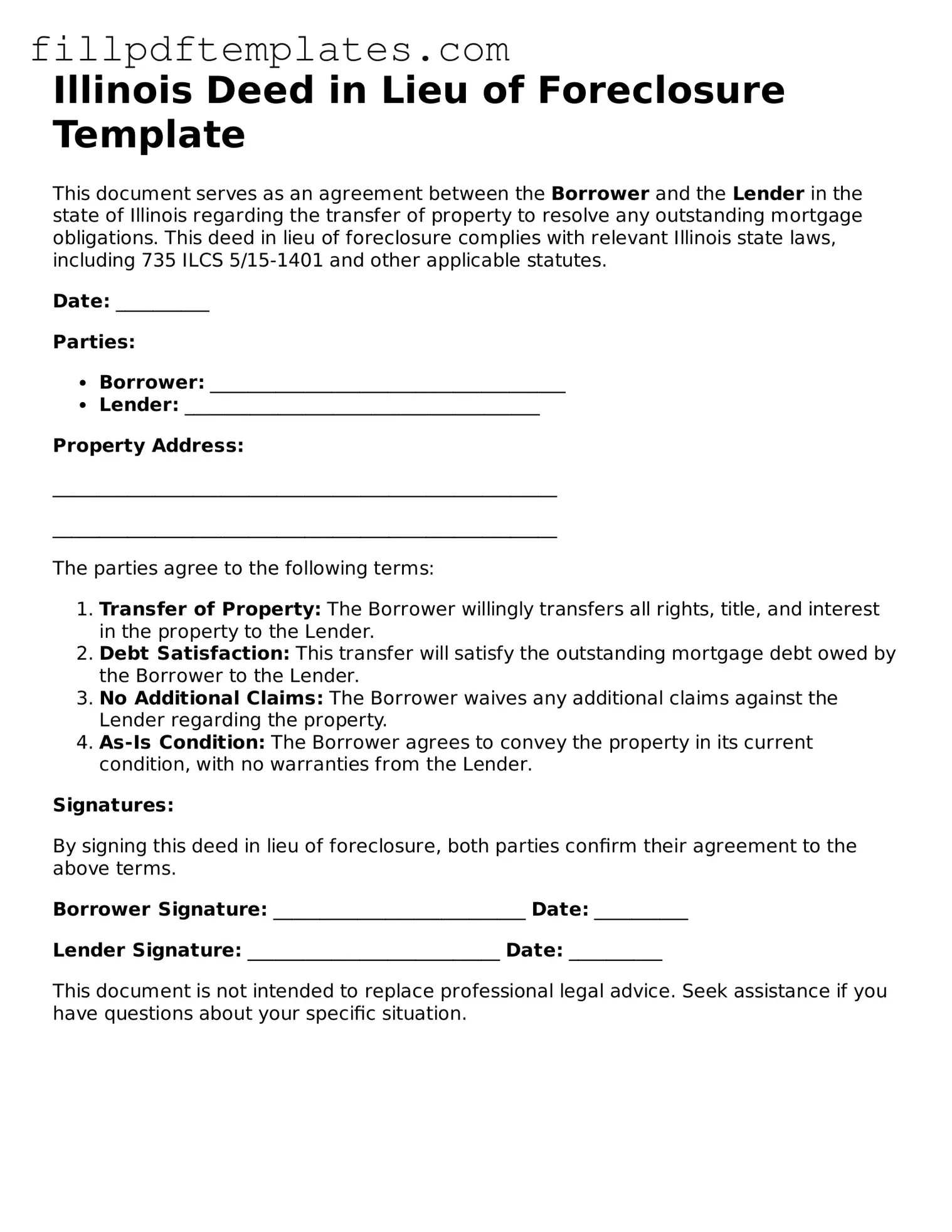Illinois Deed in Lieu of Foreclosure Template
This document serves as an agreement between the Borrower and the Lender in the state of Illinois regarding the transfer of property to resolve any outstanding mortgage obligations. This deed in lieu of foreclosure complies with relevant Illinois state laws, including 735 ILCS 5/15-1401 and other applicable statutes.
Date: __________
Parties:
- Borrower: ______________________________________
- Lender: ______________________________________
Property Address:
______________________________________________________
______________________________________________________
The parties agree to the following terms:
- Transfer of Property: The Borrower willingly transfers all rights, title, and interest in the property to the Lender.
- Debt Satisfaction: This transfer will satisfy the outstanding mortgage debt owed by the Borrower to the Lender.
- No Additional Claims: The Borrower waives any additional claims against the Lender regarding the property.
- As-Is Condition: The Borrower agrees to convey the property in its current condition, with no warranties from the Lender.
Signatures:
By signing this deed in lieu of foreclosure, both parties confirm their agreement to the above terms.
Borrower Signature: ___________________________ Date: __________
Lender Signature: ___________________________ Date: __________
This document is not intended to replace professional legal advice. Seek assistance if you have questions about your specific situation.
